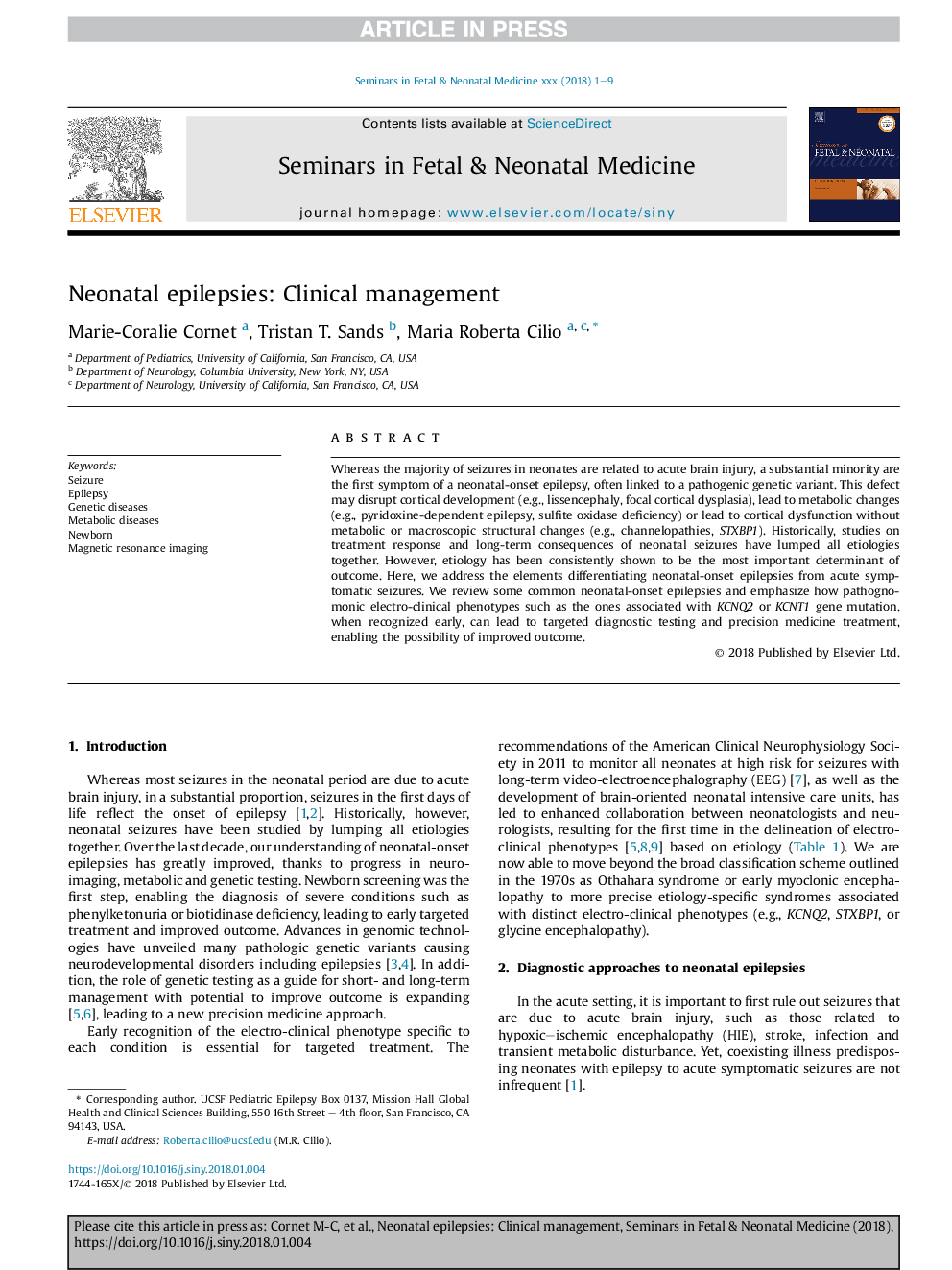| Article ID | Journal | Published Year | Pages | File Type |
|---|---|---|---|---|
| 8784282 | Seminars in Fetal and Neonatal Medicine | 2018 | 9 Pages |
Abstract
Whereas the majority of seizures in neonates are related to acute brain injury, a substantial minority are the first symptom of a neonatal-onset epilepsy, often linked to a pathogenic genetic variant. This defect may disrupt cortical development (e.g., lissencephaly, focal cortical dysplasia), lead to metabolic changes (e.g., pyridoxine-dependent epilepsy, sulfite oxidase deficiency) or lead to cortical dysfunction without metabolic or macroscopic structural changes (e.g., channelopathies, STXBP1). Historically, studies on treatment response and long-term consequences of neonatal seizures have lumped all etiologies together. However, etiology has been consistently shown to be the most important determinant of outcome. Here, we address the elements differentiating neonatal-onset epilepsies from acute symptomatic seizures. We review some common neonatal-onset epilepsies and emphasize how pathognomonic electro-clinical phenotypes such as the ones associated with KCNQ2 or KCNT1 gene mutation, when recognized early, can lead to targeted diagnostic testing and precision medicine treatment, enabling the possibility of improved outcome.
Related Topics
Health Sciences
Medicine and Dentistry
Obstetrics, Gynecology and Women's Health
Authors
Marie-Coralie Cornet, Tristan T. Sands, Maria Roberta Cilio,
